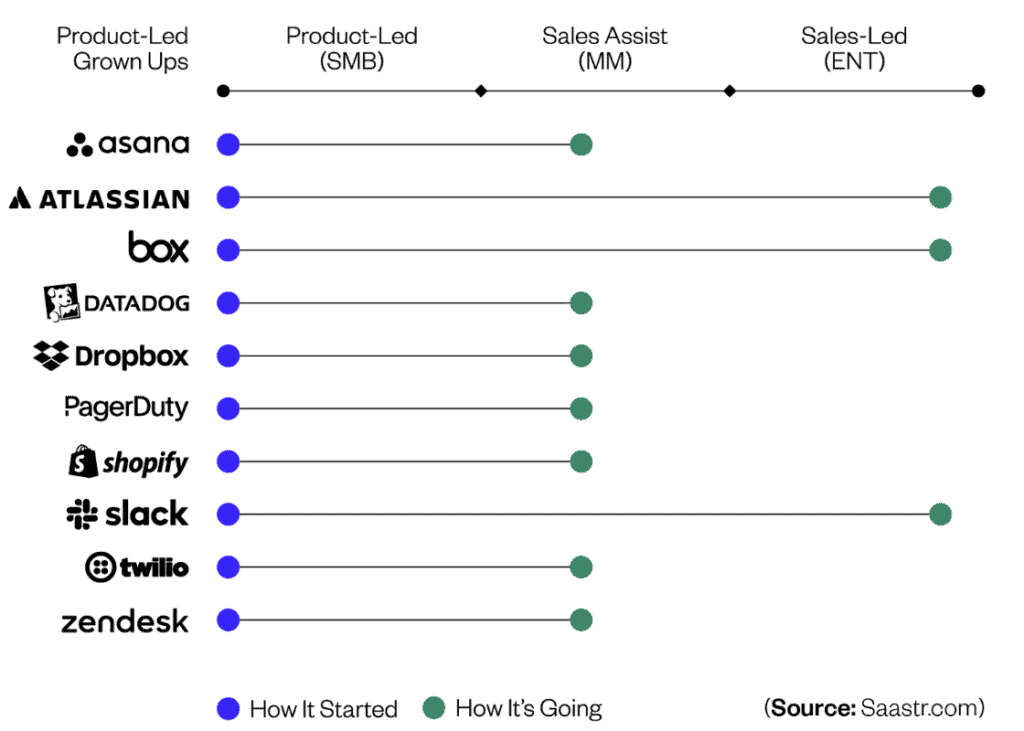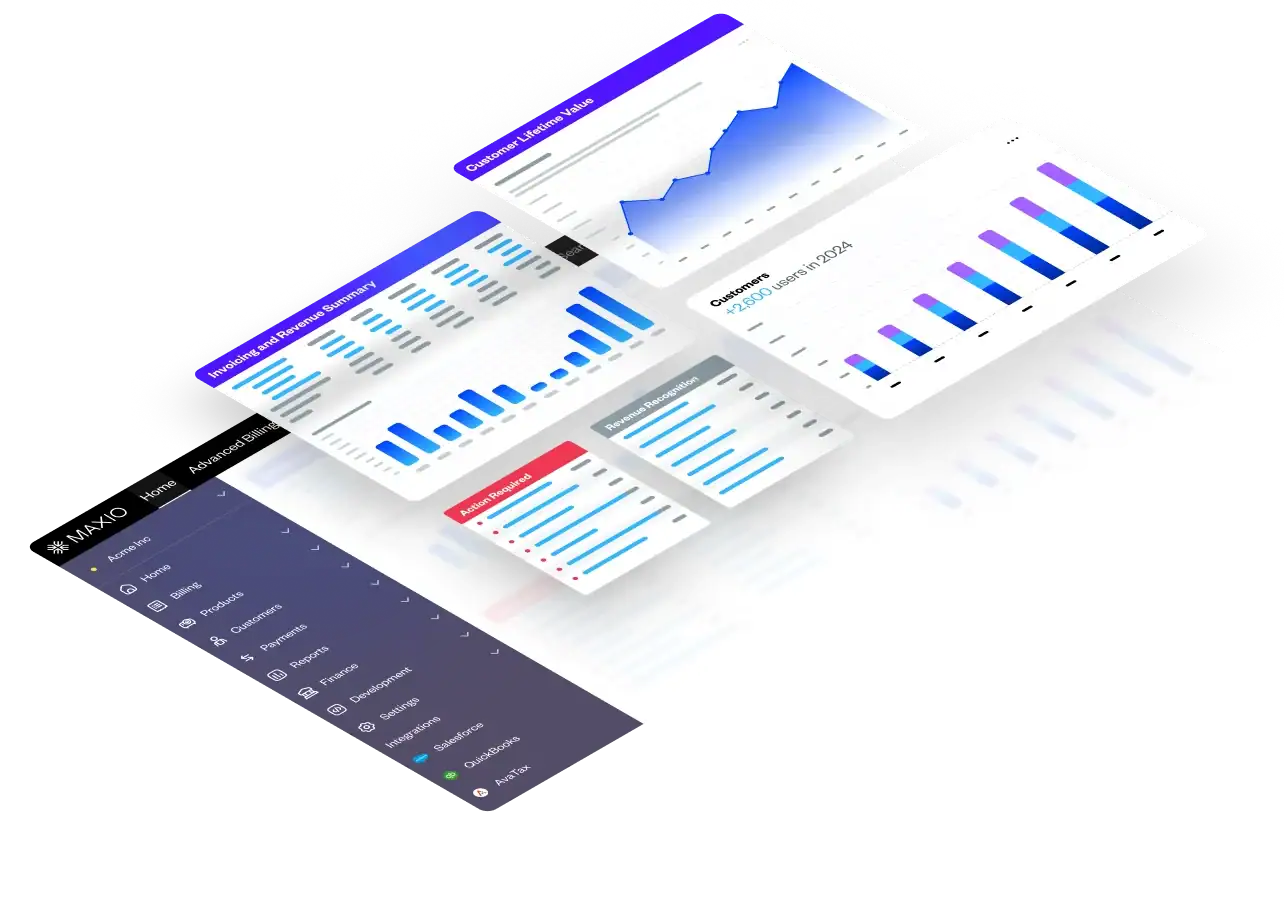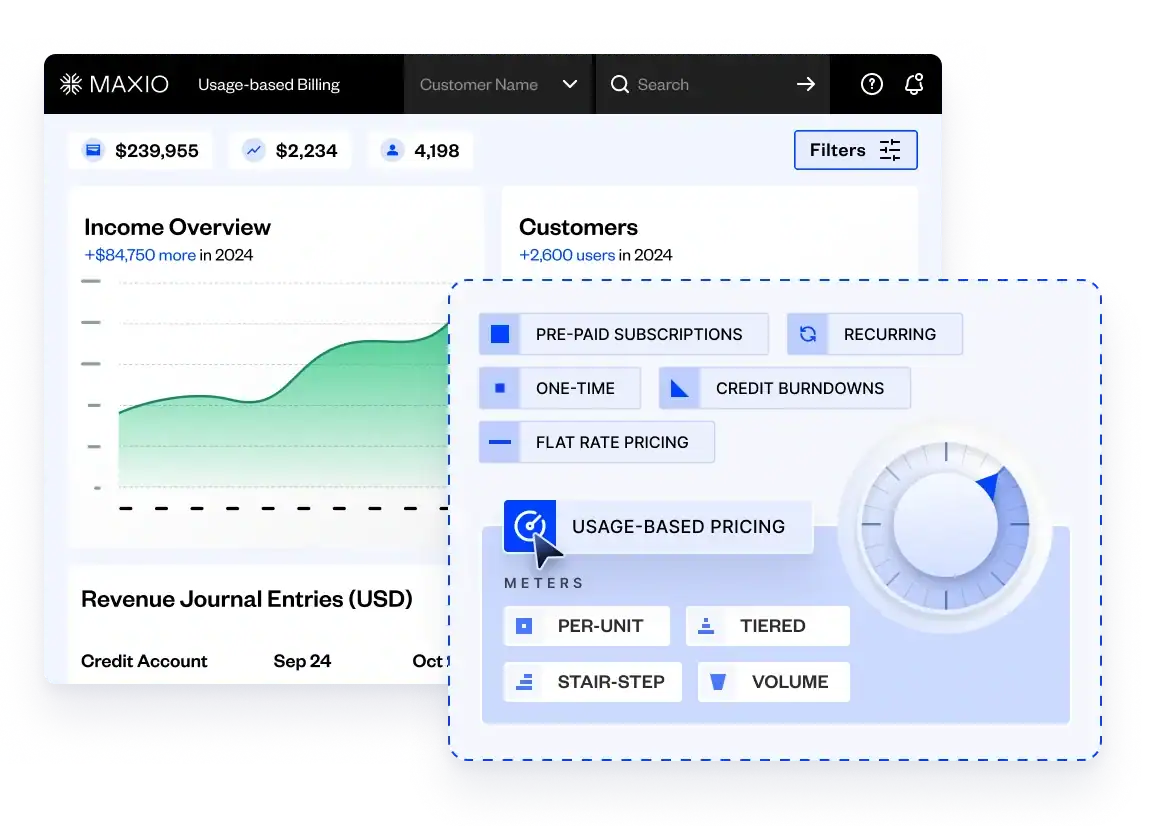Sales teams are referred to as “the tip of the spear” for good reason. They’re responsible for driving the most important metric in any growth-stage SaaS company: revenue. However, according to Gartner, sales reps only have 5% of a customer’s time during their B2B buying journey.
What about the other 95%?
In the traditional B2B funnel, any time a prospect spends outside of a meeting with a sales rep is thought of in terms of a funnel stage or lead category, but—in reality—the buyer’s journey goes much deeper than that.
What the traditional B2B funnel fails to consider is that the buyer’s journey is changing rapidly. Prospects are adopting a “user-first” mentality and expect to get familiar with a SaaS product before jumping into an annual contract. How can companies adapt to this shift in the B2B buying process?
For many traditionally sales-led companies, the answer lies in adopting a product-led motion.
Product-led growth is an end user-focused growth model that relies on the product itself as the primary driver of customer acquisition, conversion, and expansion.
OpenView Venture Partners
Recognizable SaaS names like Calendly, Slack, and Dropbox are just some of the companies that use a combination of sales-led and product-led tactics to generate demand and drive revenue growth across market stages. While these industry leaders have seen success with a hybrid growth model, attempting to implement and manage two separate GTM strategies is far from easy. Here’s how you can implement a product-led motion in your own organization and adapt to the “user-first” buyer’s journey.
Sales-led growth vs. product-led growth: two is better than one
At first glance, product- and sales-led initiatives seem like opposite strategies, but the reality is neither exists in a vacuum. In most cases, the best GTM strategy includes a mix of the two. Here’s how sales-led and product-led growth break down in a nutshell:
Product-led growth (PLG) puts your product at the center of your company’s growth efforts and your users in the driver’s seat. This is usually accomplished by providing an incentive such as a free trial via a freemium business model, access to entry-level product features, and basic user support to attract new users and deliver quick time-to-value.
Sales-led growth is a discovery-based process focused on a needs assessment specific to the customer. This hands-on, service-based approach is usually required for highly complex products or for SaaS products designed for hyper-specific niches or verticals that require industry expertise to understand.
Sales-led product-led growth = the hybrid model
The two-pronged approach between product and sales is commonly referred to as the hybrid model—a common (and effective) strategy where sales-led and product-led tactics are both used to win new business.
For example, Asana, Dropbox, and Zendesk all started off as product-led SMBs before increasing their sales headcount to support both individual end-users and large enterprise accounts.

How to implement product-led growth effectively
Remember your audience
Before you roll out a new GTM strategy, it’s important to remember who your ideal customer is.
Not every inbound prospect that pops up on your radar via a product-led motion is going to fit into your ICP. By diving head first into a product-led motion, you may quickly find that you’re wasting time nurturing potential leads and prospects who aren’t a good fit for your SaaS in the first place.
In short, not all products are built to be PLG products. Double down on what your product does best and what your market and customers need.
Pick the right time
Introducing a product-led motion is a big shift that affects your product, operations, customer enablement, and culture. For established sales-led companies, diving right in can be more disruptive than productive.
Since introducing a new growth model is a cultural change as much as it is an operational one, when you choose to make this shift matters. You’ll need both internal and external buy-in as well as momentum to support it. Good times to introduce PLG may be when you’re:
- Rolling out a new product
- Making a major product update
- Acquiring another company or product
- Announcing a company-wide rebrand
Start slow
Most importantly, the switch to a hybrid model should be spread out into bite-sized pieces.
Start your product-led journey with a single product. Instead of completely removing sales from the equation, sales-led companies can hire or train a dedicated product-led team to manage, roadmap, and test a single product to see how it performs in the market. Based on its success or failure, you can make an internal case for more product-led growth experiments and create new opportunities.
How does Sales fit into all this?
Introducing a product-led motion isn’t meant to kick your sales team to the curb. Instead, the two work in tandem to build a powerful revenue engine that generates demand from the bottom up. However, there are several obstacles that could keep you from reaping the full benefits of a hybrid-led model.
Here are some common GTM mistakes to steer clear of:
1. Don’t use a product-led motion to duplicate the prospecting and closing efforts of your sales team. Instead, when implementing PLG, you can use it as a tool to strategically target accounts that may be downmarket from your typical ICP. This will allow you to passively generate interest and demand for your product while sticking with sales-led tactics to nurture and close larger accounts with high ACVs.
2. If your PLG and SLG funnels aren’t strongly separated, you can get a lot of noise in the sales-led path from inbound leads who aren’t actually a good fit for your product. To keep your lead flows clean and preserve your sales reps’ time, ensure that product-qualified and sales-qualified leads are kept separate and managed accordingly.
3. As you begin to launch or scale a product-led motion, you may need new sales roles, such as a dedicated inbound rep(s), to manage inbound prospects who were introduced to your product via a free trial or entry-level plan. Dedicated inbound sales team members can help you filter out customers who don’t match your ICP.
4. If customers are consistently struggling on the PLG side, you’ll need to improve your support and help content. Take the time to develop community forums, training modules, knowledge bases, and other resources that allow users to self-service without needing to contact a member of your support team directly.
Embracing the future of product-led growth
Product-led growth isn’t exclusive to SaaS, B2B, or subscription-based businesses—it’s quickly becoming the new (and preferred) way that customers discover and buy new products.
Want to future-proof your SaaS and start developing a product-led motion in your organization? You can learn more about PLG in our ebook, How Product-led Growth is Changing B2B SaaS.



